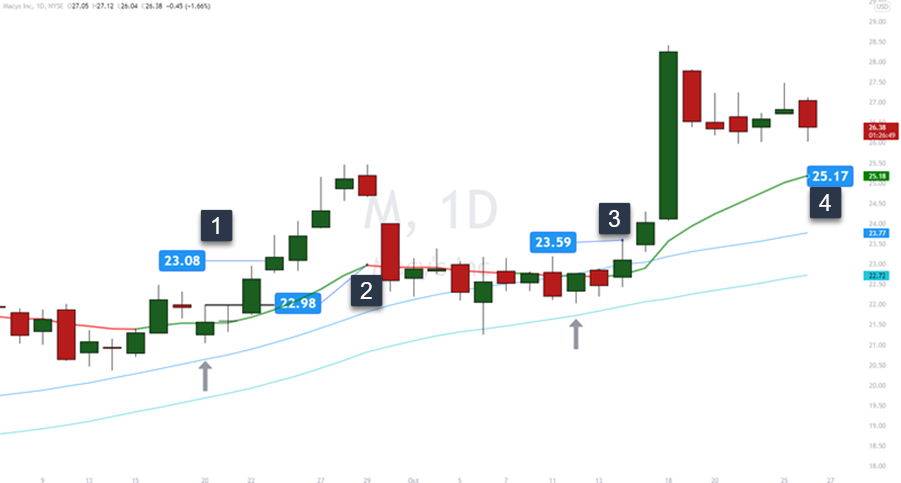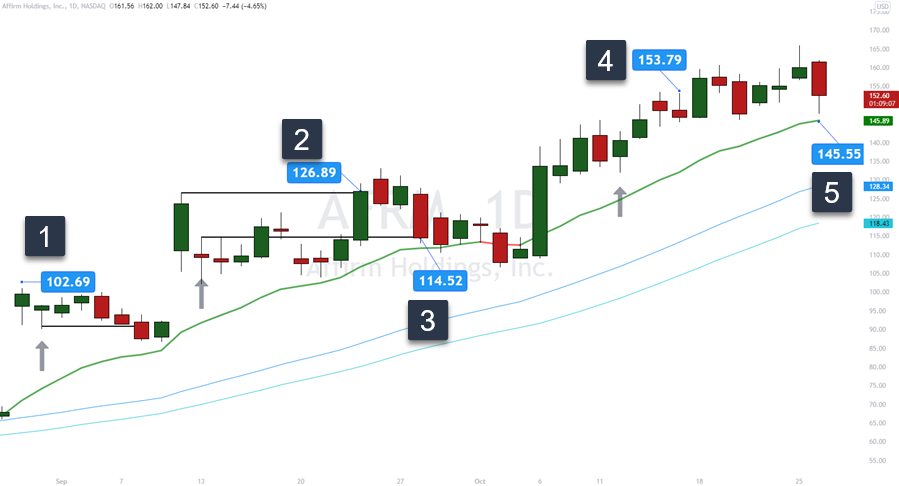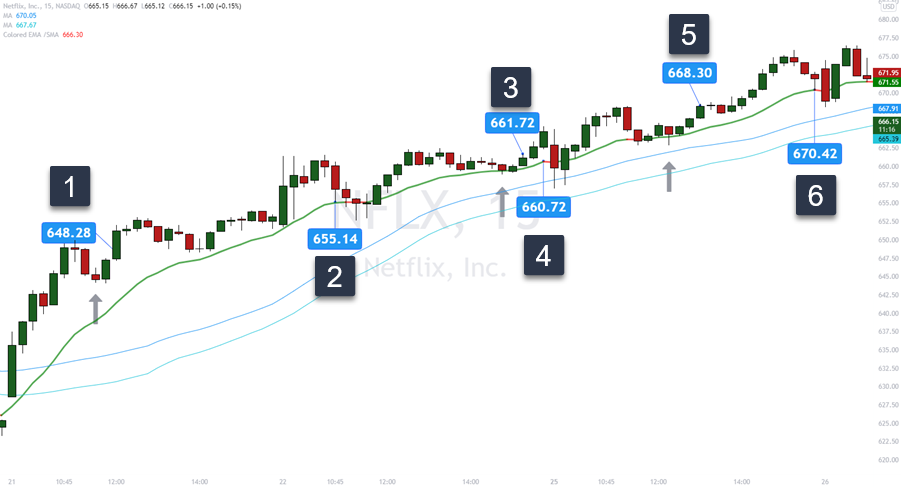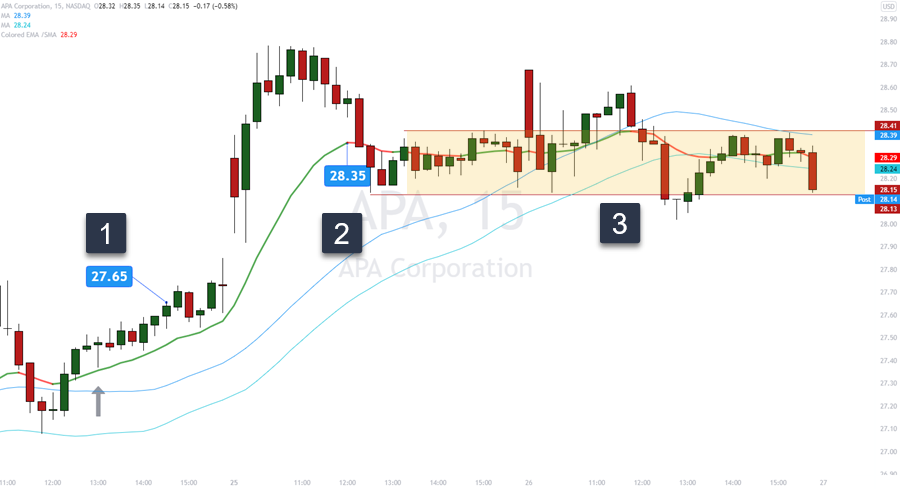- October 26, 2021
- Posted by: CoachShane
- Categories: Basic Trading Strategies, Trading Article

A while back I wrote an article on the Camelback Trading Strategy by Joe Ross.
In brief, the Camelback Strategy can be explained for long trades as:
- Price is above a 40-period simple moving average channel.
- 15-period exponential moving average is sloping upward (not flat or negative)
- A lower low takes place, giving you the signal bar.
- Buy one tick above the high of the signal bar.
Short trades would be the opposite.
There has been some questions since it was published and we are going to revisit the strategy with some recent setups in popular stocks.
Although any example in stocks will be for trading shares, trading Options is an outstanding way to profit from the stock market.
Camelback Trading Strategy Walkthrough
Before we start, while I may have traded some of these names, I did not use this particular strategy to do so.
This won’t be a precise walkthrough due to time restrictions and the fact that it also assumes perfect fills. The fact is you may experience slippage when trading any strategy. Please use this as a broad strokes walkthrough that may be used for further investigation.
Also, to ensure some consistency:
- Exact highs and lows will be used for entry and stop loss prices
- Scale out will begin at 1/3 at 1R.
- Stop will move to breakeven at 1R
- Trailing stop on the remainder with the 15 EMA will be used immediately if better than breakeven
- Original rules need price action outside the channel. Obvious reversals with close outside channel will be used for entries
- Any entry that is gapped over will be skipped
Each trader will have different criteria for stops and targets. I have also adjusted an entry candle to include reversal candlesticks even if the shadows/positive close for longs are contained inside the channel and it follows the lower low rule for longs. I can’t ignore obvious price action clues.
M
This is the stock chart of Macys. Both of these trades would have made money using this strategy.

- First profit target of 1R is hit. Stop would have been moving to the 15 EMA for a trailing stop
- Trailing stop hit with authority with the red candle.
- 1R target hit
- Trade currently would be in profit and trailing stop activated
AFRM
This is a daily stock chart of Affirm Holdings.

- This trade would not have hit 1R and you would take a full loss on this position.
- This trade hits 1R and stop goes to breakeven
- Remainder gets taken out at breakeven
- Trade hits 1R target
- Current stop loss would be at the trailing stop level
ALEX
Another daily chart setup with mixed results.

- First target of 1R hit and stop initially goe3s to break even
- Stop moved to trailing stop and slight profit made
- Skipped trade as moving average was red – sloping down – on the setup candle. Expect this to happen when price is not advancing.
- This trade ends with a full loss
- 1R scale out
- Breakeven on final positions
- 1R hit
- Breakeven stop was ticked out and price resumed moving up
Day Trading Time Frame
Daily charts are great for those with limited trading time. You can see there is a viable strategy baked into the Camelback trading approach.
Let’s take a look into a 15 minute intra-day time frame.
NFLX

Netflix is a pricey stock and is probably better utilized using option contracts. Regardless, here is the breakdown of this chart:
- 1R scale out
- Remainder of position out at trailing stop loss
- First target of 1R met
- Trailing stop loss hit
- 1R target hit
- Stop loss using 15 EMA was hit
APA
This is a great example of the rule in the original post about not trading a flat market.

- 1R target hit and trailing stop implemented as it is above the entry price
- Stop out with the trailing stop
- Sideways price action
EMR

- 1R target hit
- Trailing stop exit
Other Trading Variables To Remember
While you could trade this strategy blindly, I do recommend reading the price action.
Trading ranges can be easy to see and can be easy to get chopped up in. This is why the rule of seeing a flat moving average comes into play. There will be some discretion what flat is so I suggest looking at price action description of a trading range.
I also like the signal candles to be true reversal type of candlesticks. You could implement the 3 bar reversal strategy using the indicators provided in this strategy.
In the end, the Camelback Trading Strategy:
- Uses a longer term trend channel requiring price either above it or below it
- Uses a short term moving EMA to measure momentum and short term trend direction
- Trades in the direction of the trend, with momentum, and a combined short term trend
If you have skipped reading the original article, I suggest you take a look at it and work through some charts.
I do think using options as part of this strategy would be a good move for traders of all account sizes.
